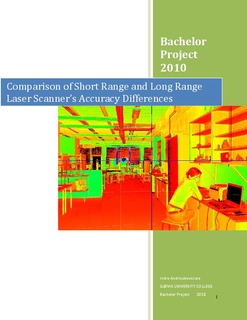| dc.description.abstract | This Bachelor thesis is a final task of Geodesy study programme. The topic of my thesis is Comparison of Short Range and Long Range Laser Scanner’s Accuracy Differences.
Laser Scanning is a technology which is used to gather data about an object or surface which can be used to create a 3D model or for detailed reconstruction. There are many applications for laser scanning: architecture, archaeology, geography, geodesy, geology, constructions, civil and transport engineering sectors, extraction of petroleum and gas and other scientific areas. Laser Scanner measures the distance to the first object on its path and find three dimensional coordinates of that point. Therefore like all other Electronic Distance Measurement (EDM) instruments it has to be calibrated before doing all measurements, because only then we can choose suitable method of measurement and guarantee precision results. | en_US |
